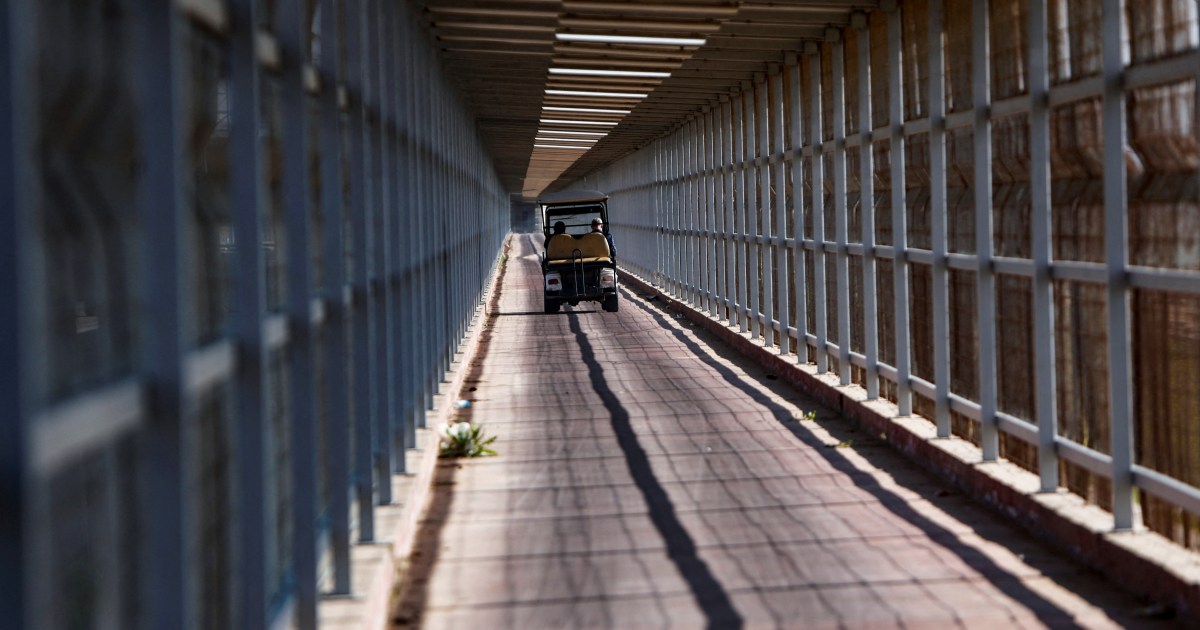The seven border crossings of Gaza | Israel-Palestine conflict
Gaza City – Despite Israel’s disengagement from the Gaza Strip in 2005, it still fully controls entry and exit from Gaza by land, air and sea, as well as Gaza’s civil population registry, telecommunications networks, and many other aspects of daily life and infrastructure.
A crippling blockade began in June 2007, after Hamas took control of the Gaza Strip, with a series of restrictions on goods, fuel and other basic elements, as well as a tightening of travel into and out of the Gaza Strip.
The restrictions have led to Gaza being described as an ‘open-air prison’. A 2011 United Nations report stated that the blockade was “collective punishment … in flagrant contravention of international human rights and international law”, and Israel has faced criticism from multiple countries and human rights organisations.
Now, whether you are a patient seeking medical treatment, a married couple trying to reunite, a student trying to study in the occupied West Bank or abroad, a businessman trying to import goods, or just a regular Gazan trying to leave for a trip, you need to use crossings, which can be closed at any time.
The Gaza Strip is surrounded by seven crossings that were designated for the movement of people and goods into and out of the Strip.
Not all of them are still in use. After Israel imposed the blockade in 2007, all crossings were shut down except for the Rafah and Beit Hanoun crossings, which were designated for the movement of people, and the Karem Abu Salem crossing, which was designated for the transport of goods.
Israel argues that the restrictions and the closures of several of the crossings are necessary for security purposes, pointing to attacks that have previously taken place in or near crossings.
Israel controls Beit Hanoun (also known to Israelis as Erez) and Karem Abu Salem (Kerem Shalom), while Egypt controls Rafah. This means that crossings can be closed at any time by the Israelis or the Egyptians, leaving Gazan Palestinians stranded.

The Rafah crossing:
The Rafah crossing is the only way to cross between Egypt and Gaza, and therefore serves as a vital link between Gaza and the rest of the Arab world, especially after Israeli forces destroyed Yasser Arafat International Airport, the only Palestinian-operated airport, in 2001.
Restrictions at the crossing imposed by the Egyptian authorities are currently not as strict as they have been in the past, but limits on the number and type of people allowed to travel continue. This has forced many Palestinians in Gaza to pay expensive and unofficial “coordination fees” to the Egyptian side to be able to leave during the limited days the crossing is open.
Palestinian passengers also often complain about the behaviour of Egyptian security personnel, and what they describe as frequently humiliating searches. These measures can prolong the trip between Rafah and Cairo airport by up to 72 hours in some cases.
The Rafah crossing does not allow Palestinians from the occupied West Bank to enter Gaza.
Additionally, Israel does not allow people to return to Gaza via the Beit Hanoun crossing if they have left via Rafah. This puts Palestinians in Gaza in a difficult situation – if they leave through Rafah and it then closes, they may not be able to re-enter
The Beit Hanoun (Erez) crossing:
The Beit Hanoun crossing is located in the north of the Gaza Strip and is under full Israeli control. It is the only border crossing that allows Palestinians in Gaza to travel to the occupied West Bank without passing through Egypt or Jordan, and is controlled by the Israeli army.
It is notoriously difficult for Palestinians to enter and exit Gaza via Beit Hanoun – no one crosses the border without being granted permission by Israel and submitting to lengthy security checks.
Permits to cross are only given to limited categories of people, such as medical patients and their companions, trader-permit holders, and other exceptional humanitarian cases.
The permit processing times for Beit Hanoun are known to be extremely long. It has been known for people seeking medical treatment outside of Gaza to wait for up to 50 working days for a permit, regardless of when their medical appointment is.
It is also very common for Israeli authorities to not respond to permit applications, even when Palestinians in Gaza meet the travel permit criteria. Israeli rejections of permits are explained as being for security reasons, with no further explanation given.
The Karem Abu Salem (Kerem Shalom) crossing:
Karem Abu Salem is located near the point where the borders between Egypt, Gaza and Israel meet, and operates occasionally as an alternative to the Rafah crossing. However, it is mainly used for the movement of trade between the Gaza Strip and Israel.
For more than a decade, the crossing has been Gaza’s main commercial crossing and the only one bordering Israel. It is also the only crossing where goods grown or produced in Gaza can be shipped for sale outside the territory.
Karem Abu Salem was initially used for transporting humanitarian aid into Gaza for the territory’s two million residents.
However, from 2007, Israel banned the entrance of a long list of goods into Gaza, including the entry of items it defines as “dual-use.” This means items that can have a civilian purpose, but which, according to Israel, could also be used for military purposes.
The al-Muntar (Karni) crossing:
Al-Muntar (known to Israelis as Karni) is located in the northeastern end of Gaza, and was used for transferring goods between Gaza and Israel, and also for Israeli settlers to access settlements in Gaza before the 2005 Israeli disengagement. When Hamas took over the Gaza Strip in June 2007, Israel closed the crossing, and in 2011 it was permanently shut by Israel.
The al-Awdah (Sufa) crossing:
The al-Awdah crossing, located in eastern Rafah, was one of the smallest crossings in Gaza, and was formerly a transit point for construction materials. It was shut down by Israel in 2008.
The al-Shujaiah (Nahal Ouz) crossing:
Al-Shujaiah crossing (also known as Nahal Ouz), was designated for the transportation of fuel, such as gas, benzene and industrial diesel fuel into Gaza via underground pipes. The crossing was closed by Israeli authorities in 2010.
The al-Karara (Kissufim) crossing:
Al-Karara, (also known as Kissufim), is located east of Khan Yunis and Deir al-Balah. It was closed in 2005 after Israel’s disengagement from Gaza, and is now mainly used for Israeli military action, as an entry point for tanks and military vehicles when military invasions of Gaza take place.




